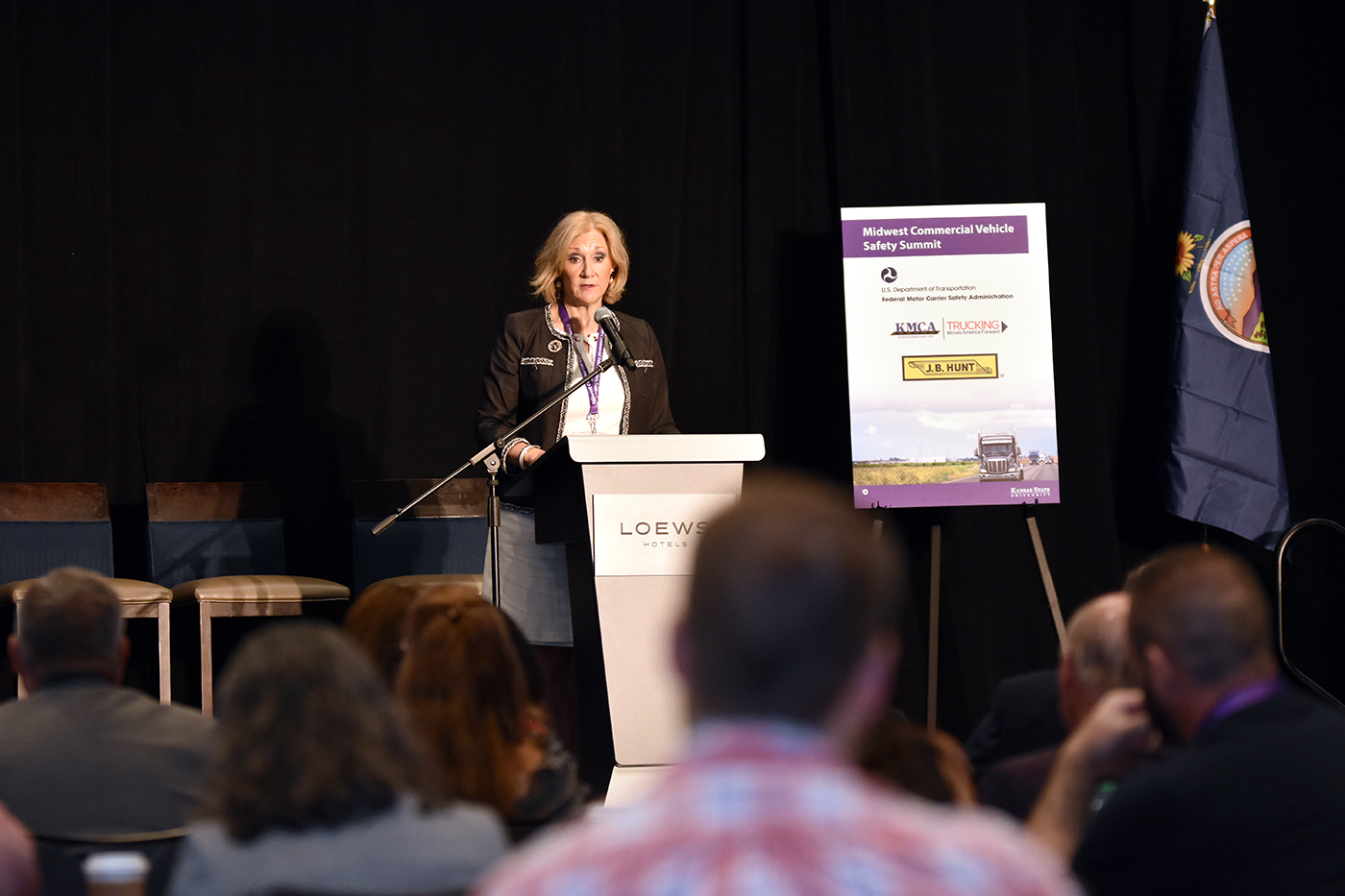Safer roadways, new technologies, collaboration at the heart of the first Midwest vehicle safety summit
Friday, June 10, 2022 | Written by Greg Tammen

Julie Lorenz, secretary for the Kansas Department of Transportation and director of the Kansas Turnpike Authority, shares statistics to attendees at the 2022 MCVSS.
OLATHE — Nearly 270 government, industry and research personnel attended the inaugural Midwest Commercial Vehicle Safety Summit on June 1-2 in Kansas City, Missouri.
The summit brought together multiple state and federal agencies, private industry, law enforcement, transportation safety engineers, university researchers, insurance companies and nonprofits who want to decrease the number and severity of commercial motor vehicle crashes on roadways throughout the Midwest by increasing safety through knowledge, technology evaluation and networking.
"We have the opportunity here to save more lives and make a greater impact overall," said Darrell Ruban, associate administrator for the Office of Safety in the Federal Motor Carrier Safety Administration, who kicked off the two-day summit.
Ruban's comment followed multiple statistics about roadway safety, including that crashes have increased in recent years — in large part because of driver impairment — to underscore the importance of the summit and the work being done by those in attendance.
"In Kansas, we're headed in the wrong direction — at least in terms of safety [when it comes to vehicle crashes]," said Julie Lorenz, secretary for the Kansas Department of Transportation and director of the Kansas Turnpike Authority.
Lorenz, who receives daily reports about fatal vehicle crashes in Kansas, said May 2022 was one of the deadliest months for Kansas drivers.
This trend was echoed nationally by the Honorable Michael Graham, board member of the National Transportation Safety Board, an independent federal investigative agency that investigates significant transportation crashes. In 2019, the Fatality Analysis Reporting System, or FARS, recorded 36,000 roadway fatalities while 2020 had nearly 39,000 fatalities. In 2021, though, nearly 43,000 roadway fatalities were recorded. The 2021 number is the highest number of roadway fatalities since 2005 and the largest increase in the history. Vehicle crash reduction is a priority for the NTSB as stated in their 2021-2022 "Most Wanted List."
Despite the numbers, though, Lorenz and others underscored that "there's never been a better time" to be involved in vehicle safety, in large part due to the field continuously receiving bipartisan funding for new vehicle technology, repairing or enhancing existing roadway infrastructure and promoting safety professionals in the field seeking to make the roadway system safter.
Over the two days, speakers shared and discussed data, research and public education, policy, safety efforts and other topics related to commercial vehicles. New technologies, such as vehicle collision avoidance systems for semitrucks, driverless automated vehicles and functional field-of-view technology, also were frequently discussed.
Featured at the summit was a SAE Level 3 automated semitruck from the U.S. Department of Transportations' Federal Motor Carrier Safety Administration's Automated Commercial Motor Vehicle Evaluation, or ACE, Program. The truck is equipped with some of the latest safety technology, including track rail systems on the grill and front of the truck that hold 12 sensors and cameras and four antennas, as well as mounted GPS systems on the top and trailer of the vehicle.
The summit was organized by Kansas State University's Carl R. Ice College of Engineering, the K-State Olathe campus and the U.S. Department of Transportations' Federal Motor Carrier Safety Administration through a federal grant.
Eric Fitzsimmons, Ph.D., associate professor and center director in the department of civil engineering, led the grant and planning team.
See photos from the summit.